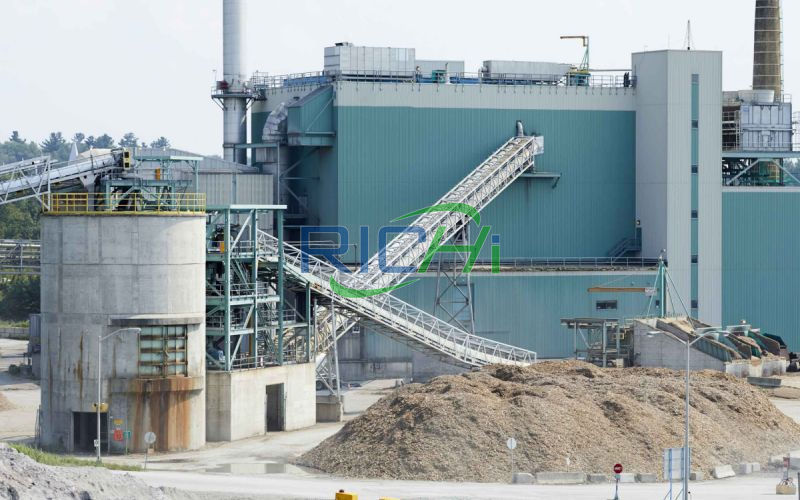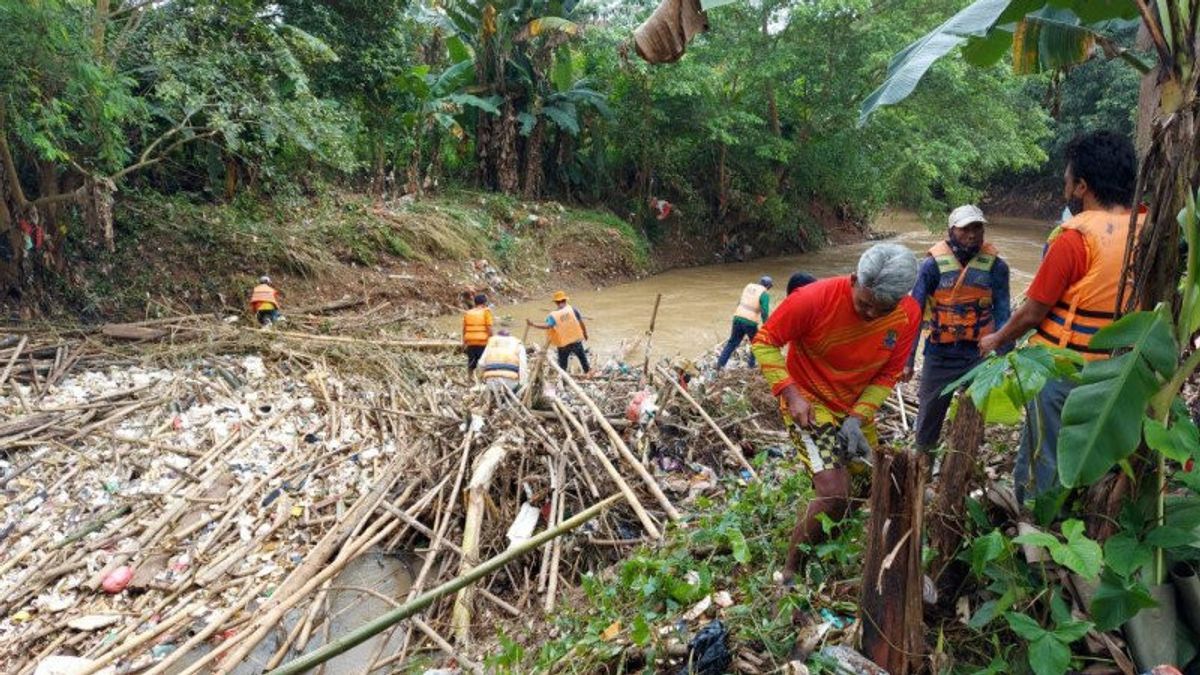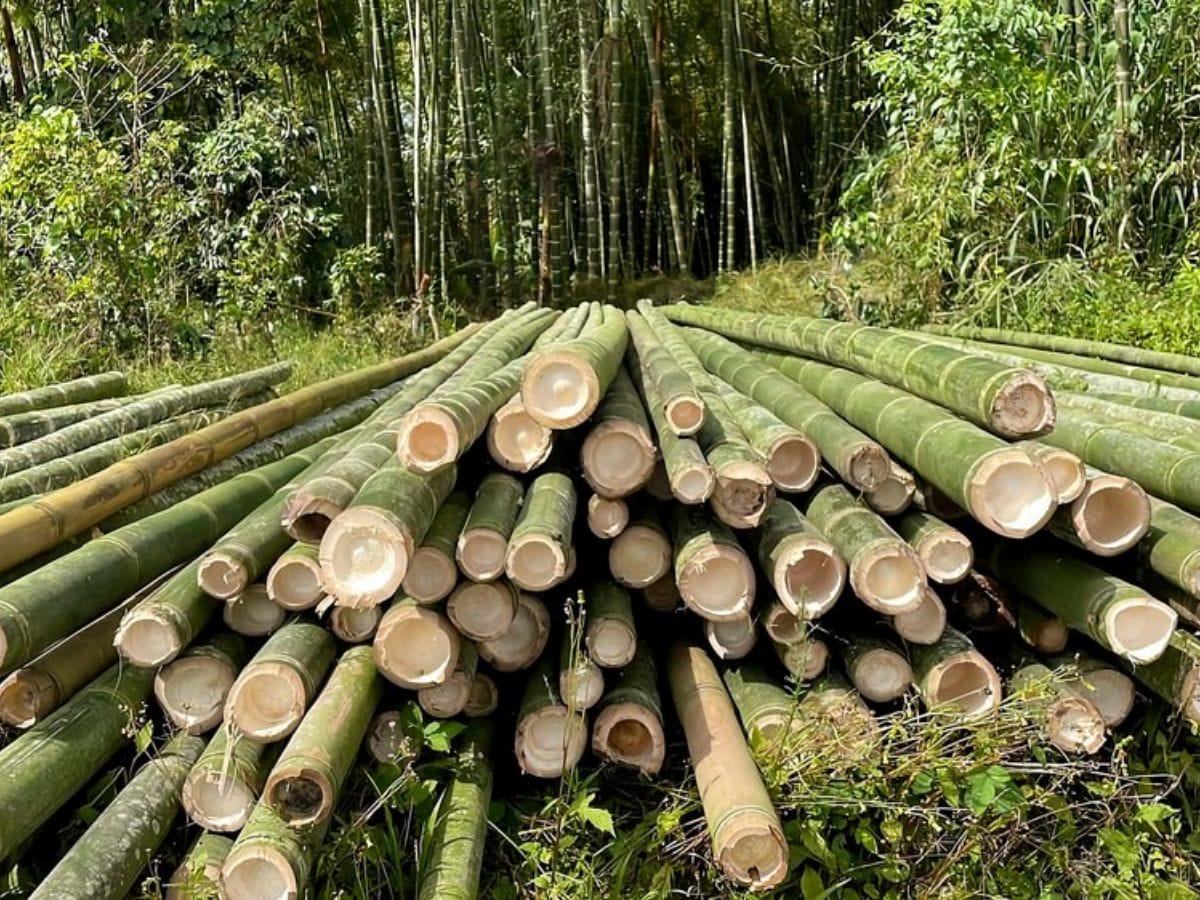Based on the good market prospects, the Vietnamese customer of this 4 t/h wood bamboo pellet production line in Vietnam project invested US$390,000 to build a new biomass pellet production line project with an annual output of 20,000 tons. The project covers an area of 6,500 square meters and a total construction area of 4,500 square meters.

This is a bamboo pellet production line in Vietnam project. The project mainly uses bamboo, and also adds agricultural and forestry waste such as wood chips and corn stalks.
Vietnam is currently one of the countries with the fastest economic development. The energy development strategy has always played an important role in Vietnam's economic development. The relative shortage of energy, the irrationality of the energy structure and the storage area of energy resources have affected the development and utilization of energy.
Name:
Bamboo pellet plant project
Country:
Vietnam
Date:
June 04, 2022
Capacity:
10,000 t/a
Pellet Size:
6-10 mm
The install period:
90 Days
Control Mode:
Semi-automatic
Guiding Price:
US$390,000
Energy waste and environmental pollution caused by low efficiency in the process have become important factors affecting the sustainable development of Vietnam's economy and society. Therefore, developing rural agricultural and forestry waste into resources and energy and implementing strategies to promote biomass energy development play an important role in Vietnam's economic development.
Bamboo is widely found in developing countries. Currently, millions of tons of bamboo resources around the world are not fully utilized, and there are millions of hectares of degraded land and land with utilization potential suitable for new bamboo forests.
Bamboo, like other woody biofeedstocks, can be converted into solid, liquid and gaseous fuels through biochemistry and thermochemistry, and can meet the biofuel market's sustainability requirements through relevant EU-recognized forest certification projects (such as FSC and PEFC).
Based on the good market prospects, the Vietnamese customer of this 4 t/h wood bamboo pellet production line in Vietnam project invested US$390,000 to build a new biomass pellet production line project with an annual output of 20,000 tons. The project covers an area of 6,500 square meters and a total construction area of 4,500 square meters.
The 4 t/h wood bamboo pellet production line in Vietnam project covers a total area of 6500m2 and a total construction area of 4500m2.
| Project Category | Engineering Content | Remark |
| Structural work | 1 Biomass fuel production plant with a construction area of 2750m2 | 1F newly built, steel structure |
| Item | Raw material name | Annual consumption | Remark |
| Biomass fuel | Bamboo chips | 11,000 tons | Local procurement, car transportation, bagging, maximum storage capacity of 3,000 tons |
| Sawdust | 6,000 tons | Local procurement, car transportation, bagging, maximum storage capacity of 1,000 tons | |
| Corn stamens, corn stalks, bran powder, etc. | 6,000 tons | Local procurement, car transportation, bagging, maximum storage capacity of 1,000 tons | |
| Public | Water | 3344m3 | Local tap water |
| Electricity | 100,000kWh | Local power grid | |
| Fuel | 200 tons | Biomass produced by this project |
The raw materials transported into the Vietnam wood bamboo pellet plant are sliced by a slicer and then crushed into appropriate sizes by a crusher. The crushed bamboo is dried in a dryer, mixed with other waste materials, and sent to the bamboo pellet machine via a conveyor belt for pressurization and densification. The newly extruded bamboo pellets are cooled, solidified and strengthened. strength.
The bamboo pellets are then screened to separate the bamboo particles and bamboo pellets. After simple packaging, it is put into storage for sale. Unqualified products can be reused as raw materials, reprocessed, and recycled. The formed biomass fuel is small in size, has a large specific gravity, is resistant to combustion, and is easy to store and transport.
| Number | Equipment name | QTY | Model |
| 1 | Slicer | 4 | |
| 2 | Bamboo granulator | 5 | |
| 3 | Grinder | 2 | 75kw |
| 4 | Tumble dryer | 1 | Fuel (biomass fuel produced by this project) |
| 5 | Bag filter | 2 | |
| 6 | Cyclone | 2 | |
| 7 | Conveyor | 5 | |
| 8 | Forklift | 1 | |
| 9 | Forklift | 3 | 50 |
| 10 | Truck | 2 | 25 tons |
As the core of bamboo pellet production, the pellet machine determines the bamboo quality of the entire production line. The RICHI ring-die biomass fuel pellet machine is very suitable and is highly recommended due to its strong adaptability, simple operation, and easy maintenance.
For large-scale bamboo pellet production, it is recommended to use a bamboo pellet machine because of its high production capacity. If you have an abundant source of bamboo, this is an opportunity to make bamboo pellet fuel through a pellet machine for home use or profit.
The water supply uses a branch-shaped water supply pipe network to supply water to each water point, and the water supply pipes are PPR pipes. All pipelines in the factory area are laid underground, with a burial depth of not less than 1.8 meters.
In this design, domestic water is connected from the nearby tap water pipeline in the factory area. In order to facilitate measurement and independent accounting, the drainage volume of the project is shown in the table below.
| Item | Standard | Quantity | Annual water consumption (m3) | Annual emissions (m3) |
| Drinking water | 0.16m3/person.d | 60 people | 2880 | 2304 |
| Canteen | 0.02m3/person.d | 60 people | 360 | 288 |
| Water for greening | 2L/m2.d | 1000m2 | 104 | 0 |
The 4 t/h wood bamboo pellet production line in Vietnam project's power supply is introduced from the local power grid, which can meet the project's production and daily electricity needs.
The waste gas generated after the project is completed and put into use is mainly: odor of raw materials and dust generated during the production process.
The project produces no production wastewater, and the main domestic sewage discharge is 2592t/a. The sewage mainly contains COD, BOD5, SS, ammonia nitrogen, and animal and vegetable oil pollutants. The wastewater quality is CODCr 200~400mg/ L, BOD5 100~200mg/L, NH3-N 30mg/L, SS 100~200mg/L.
The noise source of this 4 t/h wood bamboo pellet production line in Vietnam project is mainly the noise generated by the operation of drum screens, raw material conveyors, granulators, fans, equipment and other equipment. The noise value is generally between 75 and 95dB(A). details as follows:
| Sound source | Sound source intensity | QTY | Treatment measures |
| Trommel screen | 85-95 | 2 | Vibration reduction, sound insulation and muffler treatment |
| Granulator | 75-80 | 5 | |
| Conveyor | 70-80 | 5 | |
| Grinder | 85-95 | 2 | |
| Dryer | 70-80 | 1 |
The solid waste of the 4 t/h wood bamboo pellet production line in Vietnam project mainly comes from coarse materials screened by drum screens; dust collected by dust removal; packaging waste and employee domestic waste, etc.
Why would this customer start a bamboo pellet processing business in Vietnam? It must be because of the prospect of earning money.

Bamboo is a potential, highly sustainable biomass resource that can help countries and the world achieve renewable energy goals. For example, the European Union stipulates in its Renewable Energy Directive (REDII) that renewable energy consumption should account for 32% of total energy consumption by 2030, and also requires each member state to increase the proportion of renewable energy in the transportation sector.
It must be at least 14%. In REDII, the European Union stipulates sustainability requirements for forestry raw materials and greenhouse gas standards for solid and gaseous biomass fuels. Bamboo as a biofuel has the potential to comply with these requirements and standards.
Bamboo is widely found in developing countries. Currently, millions of tons of bamboo resources around the world are not fully utilized, and there are millions of hectares of degraded land and land with utilization potential suitable for new bamboo forests.
It is estimated that if 10% of the current global bamboo resources are economically exploited, approximately 50 million tons of biomass can be produced every year, which will play a role in diversifying the supply of biomass raw materials.
Since some bamboo-producing countries (such as Vietnam, Colombia, Brazil, Indonesia, Nigeria and South Africa) are also exporters of fuels (such as coal and biofuels), bamboo biofuels can provide these countries with an opportunity to develop new supply chains to form a green , a more diversified fuel trading portfolio, thereby promoting its gradual transition from fossil fuel trading to biofuel trading.

Currently, bamboo bioenergy products are mainly solid fuels (such as bamboo pellets), which have been commercialized in some countries (such as China and Ethiopia).
In terms of cost, bamboo generally requires manual selection, and its harvesting cost may be higher than other biomass raw materials. However, bamboo harvested in this way has no stones, soil and other debris, and is a clean and pollution-free raw material, which is different from agricultural residues (such as agricultural residues).
Unlike corn stalks and rice straw), bamboo does not require plastic packaging in logistics. Packaging materials and impurities will seriously affect the operation of biofuel pretreatment equipment, thus affecting the economic feasibility of related conversion processes.
In addition, the high greenhouse gas emission reduction potential of bamboo fuel and the high carbon sequestration capacity of bamboo forest ecosystems provide opportunities for bamboo forests to enter the carbon emissions trading market. Therefore, the economics of bamboo's complete value chain are more advantageous than other biomass resources.
In addition to this 4 t/h wood bamboo pellet production line in Vietnam, Richi Machinery also exported animal feed production lines, wood pellet production lines, organic fertilizer production lines and other projects to Vietnam.
If you also see the prospect of processing bamboo into bamboo pellet fuel, you might as well seize the market opportunity as soon as possible and contact Richi Machinery to obtain customized bamboo pellet production line solutions.
Having the right mix of reliable, high-quality pellet machine and pelletizing systems and expert support is essential to your success. Watch how our end-to-end feed pellet plant solutions have helped our customers optimize their performance.
Our customized and future-proofed turnkey pellet plant solutions is designed with you at the core. From vision to reality and beyond, our team stays connected with yours. Giving you peace-of-mind with an expert at your side.

At RICHI, we go beyond project completion. With RICHI Servicee, we’re your dedicated partners in success. Count on us for expert guidance, minimal downtime, and optimized productivity. Choose RICHI for unmatched service and support.



Meet global product demands and quality standards with industry-leading pellet plant design, engineering, equipment, and construction services for pellet processors.


Your Partner Beyond Project Completion
2000+ cases
RICHI is the leading designer, manufacturer and builder of pellet plants in the world, completing over 2000 projects in 140 countries across 6 continents.
Read More
Increase plant productivity, profitability, and safety by integrating high quality equipment into your pellet production line. Over the years, RICHI has become China's top pellet equipment manufacturer. At the same time, RICHI has established valuable partnerships with the world's leading component and raw material manufacturers to bring you the best there is in technology, automation, and efficiency in pelleting plant machinery.

For nearly 30 years, RICHI has been providing best-in-class pellet plant equipment and services to clients across a variety of industries, sizes, and needs. We pride ourselves on the knowledge and skill that each team member possesses – from our technical sales team to our process design engineers. You can count on RICHI Machinery to take your operation to the next level of innovation, quality, and success.
Need help with your pellet manufacturing plant project? Contact us today.
ANIMAL FEED
BIOMASS
WOOD
ORGANIC FERTILIZER
AQUA FEED
CAT LITTER
MUNICIPAL WASTE RECYCLING
SPECIAL PELLET PRODUCTION
RICHI Machinery continues to deliver world class pellet mill equipment, pellet plant engineering and project solutions that add value to our customers in the animal feed, wood waste, agriculture waste, organic fertilizer, cat litter and special pellet products industries. Throughout the years, we RICHI Machinery have built strong brand, becoming industry-leading pellet machine manufacturer. We value integrity, promise quality, and prioritize your success.
Learn MoreWith our expert team, we precisely implement your process engineering requirements in pellet mill and pelletizing plant systems. No matter which industry you’re in – we understand your needs and deliver solutions that meet the highest standards.
At RICHI, quality comes first. Our pellet making machine and related pellet line equipment undergo rigorous quality controls to ensure they meet the highest standards. Rely on products that are durable, safe, and efficient.
With decades of experience in pellet machine and pellet production line production, we have earned a reputation as a trusted partner in various industries. Our expertise allows us to cover a wide range of applications.
Not only do we offer premium pelleting equipment, but we are also experts at designing, building, installing, and maintaining facilities from the ground up. Our expertise is within pellt plant process design, discovering the most efficient, productive, and profitable way to handle your materials in an end-to-end cycle.

Keeping in touch with us is an effective way to solve all your problems. If you have any needs or questions, please leave your contact information, then RICHI technical consultants will send design, quotation, videos to your mailbox. You can also contact us directly via WhatsApp: +86 13838389622
Copyright©2015-2024 by HENAN RICHI MACHINERY CO., LTD. All rights reserved.